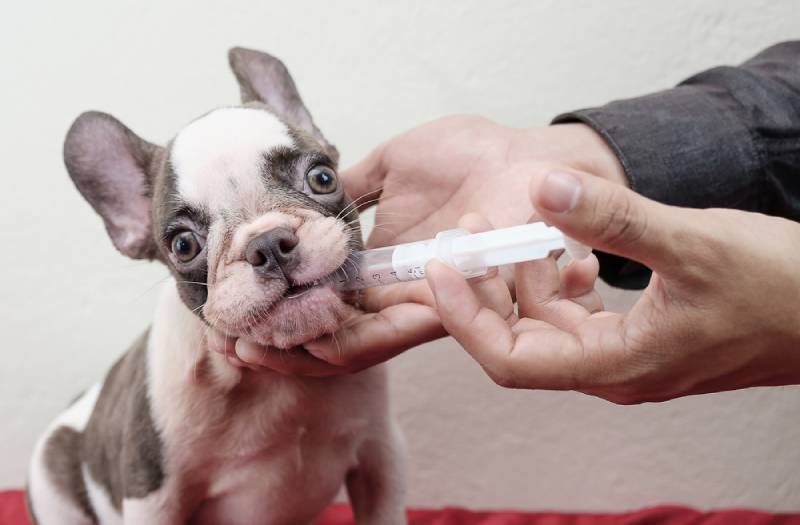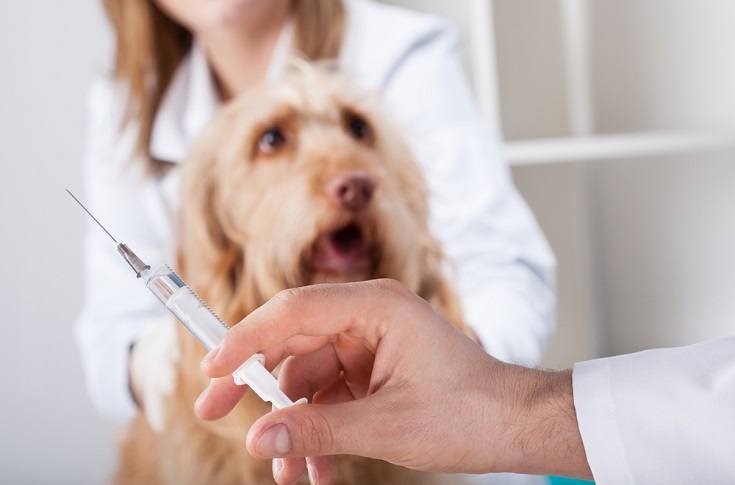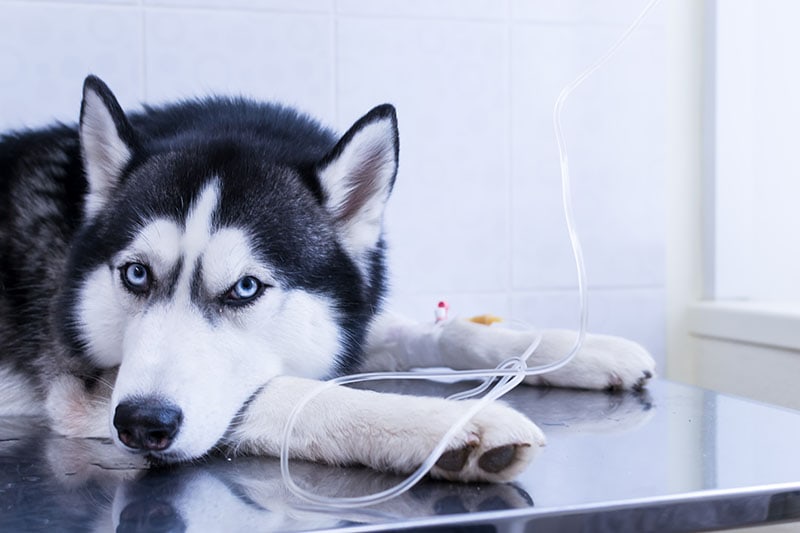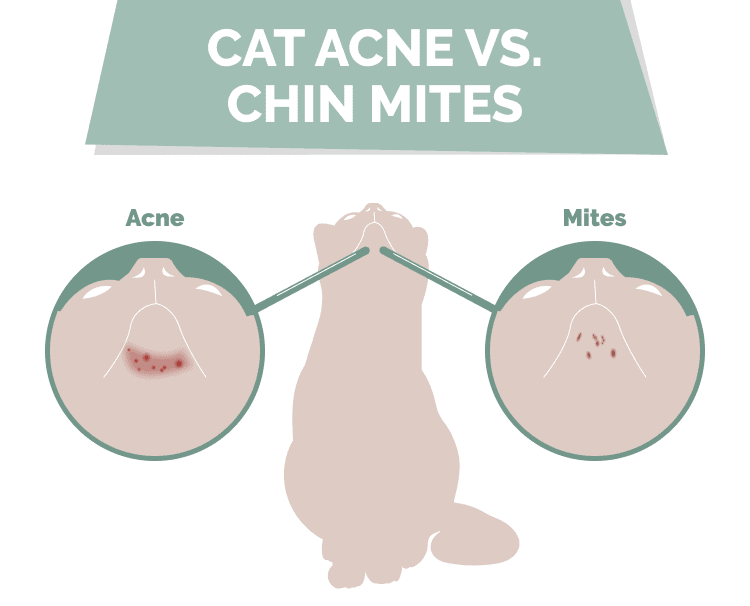How to Treat Anemia in Dogs: 11 Safe Methods (Vet Answer)

Updated on

Click to Skip Ahead
Anemia is a medical condition that occurs when there is a lower-than-normal amount of healthy red blood cells in a dog’s body. Anemia is the term used to refer to a reduction in the number of circulating red blood cells and /or hemoglobin in your dog’s blood. Anemia is not a disease in itself, but a symptom of many different diseases and disorders.
Red blood cells are made in your dog’s bone marrow and released into the circulating blood. Red blood cells typically exist in the blood for 3 months. The body is very efficient at recycling old or damaged red blood cells and using the byproducts to make new red blood cells.
There are various reasons why red blood cells become reduced, which can lead to anemia in dogs. If a dog is anemic, they will have less oxygen being delivered to their tissues as well. Here are some ways that anemia can be treated in dogs.
Signs of Anemia
- Lethargy
- Listlessness
- Pale gums
- Breathing difficulties
- Loss of appetite
- Blood loss in urine and stools
- Unable to walk very fa
Diagnosis of anemia is fairly straightforward and there are a few different blood tests that identify anemia. One of the easiest is the hematocrit or packed cell volume (PCV). Usually in dogs, the blood will be made up of 35%–55% red blood cells. If the dog is anemic, the PCV calculated will be less than 35%. Other tests to diagnose anemia include the hemoglobin count and red blood cell count.
Treatment of Anemia
1. Surgery
Surgery can be carried out to correct anemia. Anemia may be caused by a mass bleeding, a fibroid, a polyp, or a tumor. Tumors (whether they are benign or malignant) in locations such as the kidneys, bladder, spleen, or gastrointestinal tract can all start to bleed and cause blood loss. Surgical removal of these tumors may not completely cure the dog of cancer, but it will prevent anemia from progressing due to loss of blood.
Your dog may have sustained a traumatic injury causing hemorrhage and emergency surgery can stop the bleeding and prevent further blood loss.

2. Vitamin K Therapy
If the anemia is caused by rodenticide (rat) poisoning, vitamin K can be administered to reverse the effects of anticoagulant rodenticide. This is usually given for several days in a row. Accidental ingestion of rat poisoning is the most common reason dogs become deficient in vitamin K as the rodenticide depletes the body’s vitamin K which has a direct effect on blood coagulation.
3. Anti-parasite Medication
Some anemia can be caused by a large parasite infestation. If the parasite burden is overwhelming for the dog, this can cause them to lose too much blood. Commonly it is caused by heavy infestations of parasites that suck blood, such as ticks, fleas, and hookworms. There are also specific blood parasites such as Babesia that cause anemia by destroying red blood cells.
Young puppies and smaller breed dogs, or dogs that have compromised immune systems, are more vulnerable to anemia from parasites. If there is a parasite infestation, your vet can prescribe anti-parasite medication and this will get rid of the parasites and eventually, the anemia will be corrected as long as there are no other health issues.

4. Antibiotics
Certain diseases directly cause anemia and can be treated. An example of this is Lyme disease, which is a tick-borne disease that is spread via the saliva of ticks. The treatment for Lyme disease is a course of antibiotics such as doxycycline. Once the bacteria infection has been cleared, the anemia usually resolves.
5. Stopping/Changing Drugs
Some drugs can actually cause anemia. The drugs cause the dog’s immune system to mistake their own red blood cells for foreign cells. The dog’s body responds by producing antibodies to attack the body’s own red blood cells. This depletes the number of red blood cells and reduces the overall circulating number, causing anemia.
- Aspirin
- Acetaminophen
- Naproxen
- Penicillin
If anemia is noted, different drugs can be used instead of the ones listed above, depending on the original reason the drug was selected in the first place.

6. Blood Transfusion
If severe anemia is present, sometimes a blood transfusion is indicated, regardless of the underlying cause of the anemia. The indication for a blood transition can be acute or chronic. Some dogs require repeated transfusions depending on the disease process. Blood transfusions must be given with caution as they have the potential to make the dog worse rather than better. Bone marrow transfusions can also be used, but not many veterinary hospitals have the facilities for this.
7. Steroids
Steroids can be used to treat certain types of anemia. For example, Autoimmune hemolytic anemia (AIHA) is caused by the dog’s immune system. The dog attacks its own red blood cell antigens causing a reduction in numbers. In some cases of autoimmune hemolytic anemia, dogs respond rapidly to immunosuppressive doses of corticosteroids. This stops the dog’s immune system from attacking its own blood cells and stops the resulting anemia.

8. Immunosuppressive Drugs
As above, with cases such as autoimmune hemolytic anemia, immunosuppressive drugs can stop the dog’s body from attacking red blood cells in the same way steroids at an immunosuppressive dose do. Drugs such as azathioprine and cyclosporine can be used to control the condition. Thromboembolisms, (which are blood clots that block blood vessels) tend to be complications of autoimmune hemolytic anemia. This means some dogs will benefit from medication such as acetylsalicylic acid (Aspirin®) and clopidogrel (Plavix®)
9. Intravenous Fluids Therapy
If a dog presents in hypovolemic shock due to being anemic and having a decreased intravascular fluid volume, boluses of fluids such as crystalloids can be beneficial to correct the clinical signs of hypovolemia. This can offer a short-term solution, but the underlying cause of the anemia will still need to be addressed.

10. Chemotherapy
Chemotherapy that is being used to target cancerous cells can inadvertently treat anemia as well. For example, if the chemotherapy is treating a tumor that is bleeding into the gastrointestinal tract or the urinary bladder. If the tumor is reduced in size or eliminated, the bleeding will stop and so will the blood loss. However, cancer treatments such as chemotherapy can cause anemia too, especially if they affect the bone marrow. This is because they can affect the production of red blood cells. Any sort of chemotherapy must be used with caution and regular blood tests need to be run to assess white and red blood cell counts.
11. Gastrointestinal Medication
Some anemias can be caused by gastric ulcers that chronically bleed. The volume of blood loss can cause anemia in varying severity. Treatment of gastric ulcers can therefore help with anemia as if the gastric ulcer is cured, the bleeding will stop. Medications can be used to help the dog’s body heal itself by reducing gastric acid production, reducing inflammation, and minimizing pain.

Conclusion
There are many different causes of anemia in dogs. This means that there is a wide variety of treatment options for anemia, too. The prognosis for dogs with anemia depends on the underlying cause, as well as the dog’s health status at the time of presentation. If prompt diagnosis and quick initiation of appropriate treatment occur, the prognosis is good.
Severe cases of anemia that require more extensive and aggressive treatment have a poorer prognosis.
Featured Image Credit: SeventyFour, Shutterstock













